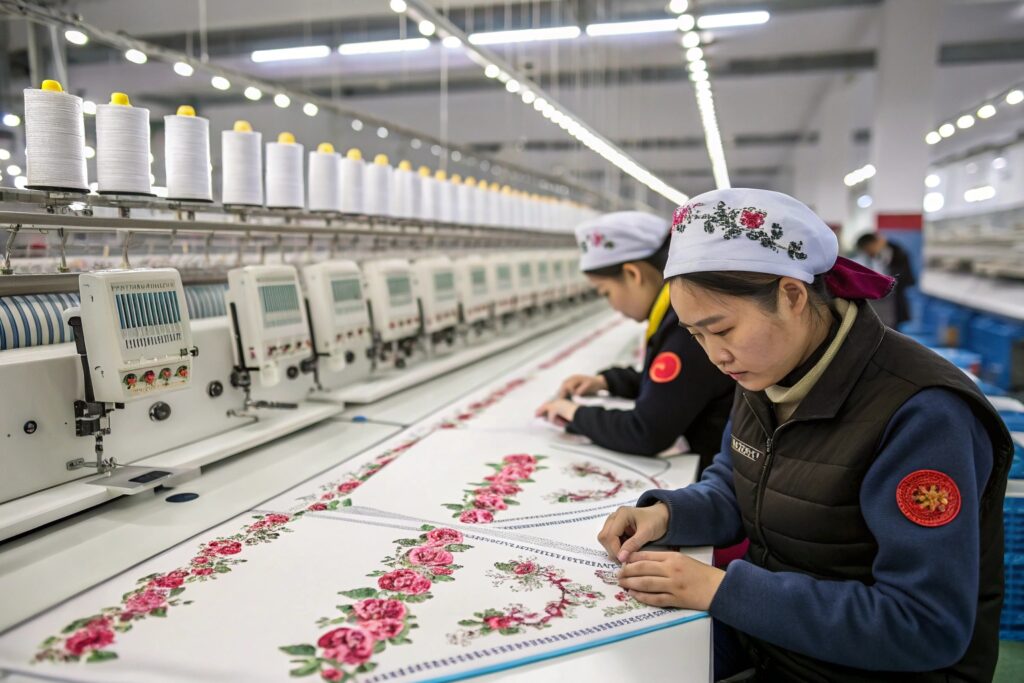Embellished headbands are more than just accessories—they’re wearable art. But creating them requires tight coordination between embroidery and headband assembly. When these steps happen in different factories, brands face delays, quality mismatches, and rising costs.
Choosing a supplier with integrated embroidery means faster development, consistent quality, and total control over your embellished headband collections—all under one roof.
In this article, I’ll explain why integrated embroidery capability gives your business an edge when sourcing fashion-forward headbands, and how it simplifies the entire production lifecycle.
How Does Integrated Embroidery Save Time in Sampling?
If embroidery is done at an external workshop, every sample round involves back-and-forth delivery. This slows down creative testing, increases shipping time, and often leads to missed deadlines—especially during seasonal drops.
Suppliers with in-house embroidery shorten the sampling cycle by 3–7 days because there's no need to outsource, coordinate, or re-ship embroidered panels between vendors.
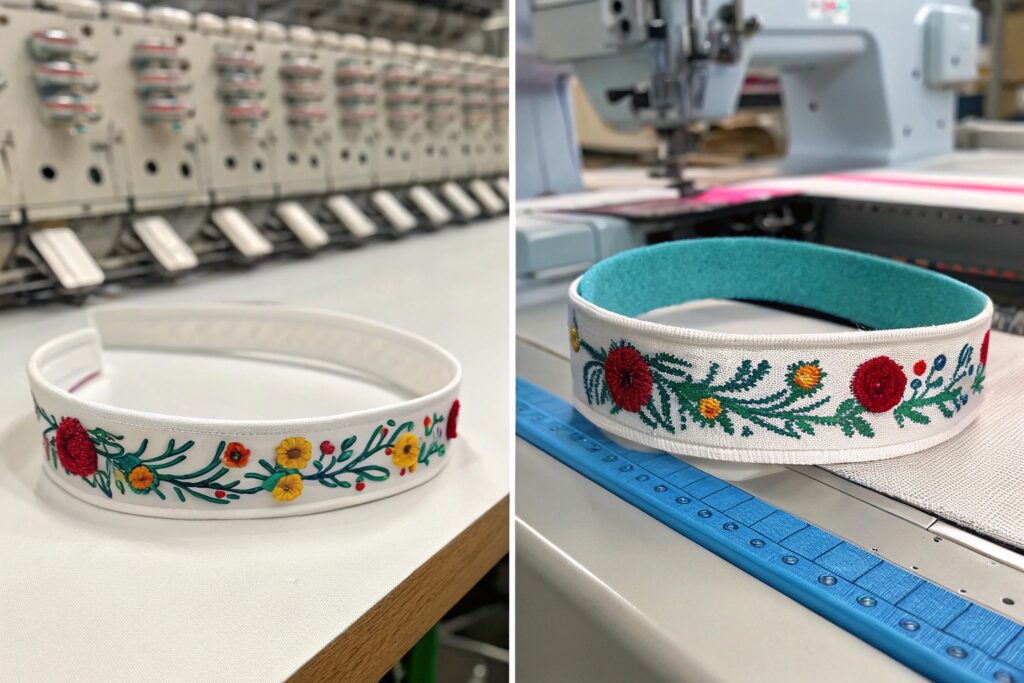
What is the typical sampling delay when embroidery is outsourced?
When embroidery is external, we see 2–3 days lost just to courier time, plus 1–2 days in queue waiting for another factory’s machine slot. That’s before any sample rejection loops kick in. In contrast, our in-house embroidery room can load urgent designs within 12 hours.
Why does integrated embroidery boost communication?
When our embroidery operators sit 20 meters from the sampling table, there's no miscommunication. We adjust thread count, motif scale, or placement on the fly. Using Wilcom software in-house also allows us to edit embroidery files instantly.
What Quality Benefits Come from One-Site Embroidery and Stitching?
Precision matters in embellished headbands. A floral motif slightly off-center can destroy visual balance. When embroidery is done separately, the risk of fabric shifting during transfer is high. That’s why fully integrated factories deliver cleaner, more consistent product finishes.
When embroidery and stitching happen at the same facility, fabric tension, placement alignment, and motif repeatability are perfectly controlled—boosting consistency and reducing rejects.
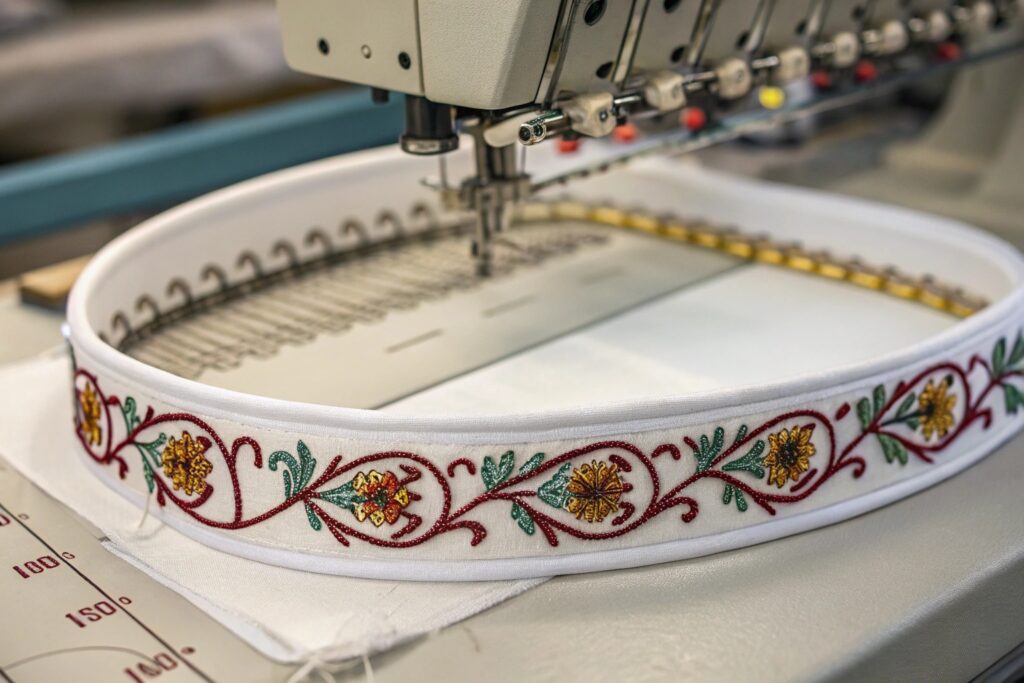
How do factories ensure precise embroidery alignment?
We use alignment lasers, fabric clamps, and stitch guides to place embroidery right where the headband will be sewn. When pattern repeatability is maintained internally, clients get the same visual every time.
What QC measures work best for embellished headbands?
Every batch undergoes dual inspection—first after embroidery, then after stitching. We test thread pull strength, embroidery stiffness, and seam alignment using AQL standards. Defective seams or crooked motifs are flagged early, not after delivery.
How Does Cost Efficiency Improve with Integrated Embroidery?
Many brands overlook the hidden fees of splitting production—separate transport costs, minimum charges at embroidery subcontractors, or markups on fabric handoffs. These add up, especially for small batches or startups.
Integrated embroidery suppliers reduce sampling and bulk costs by consolidating material usage, eliminating courier fees, and avoiding subcontractor margins.
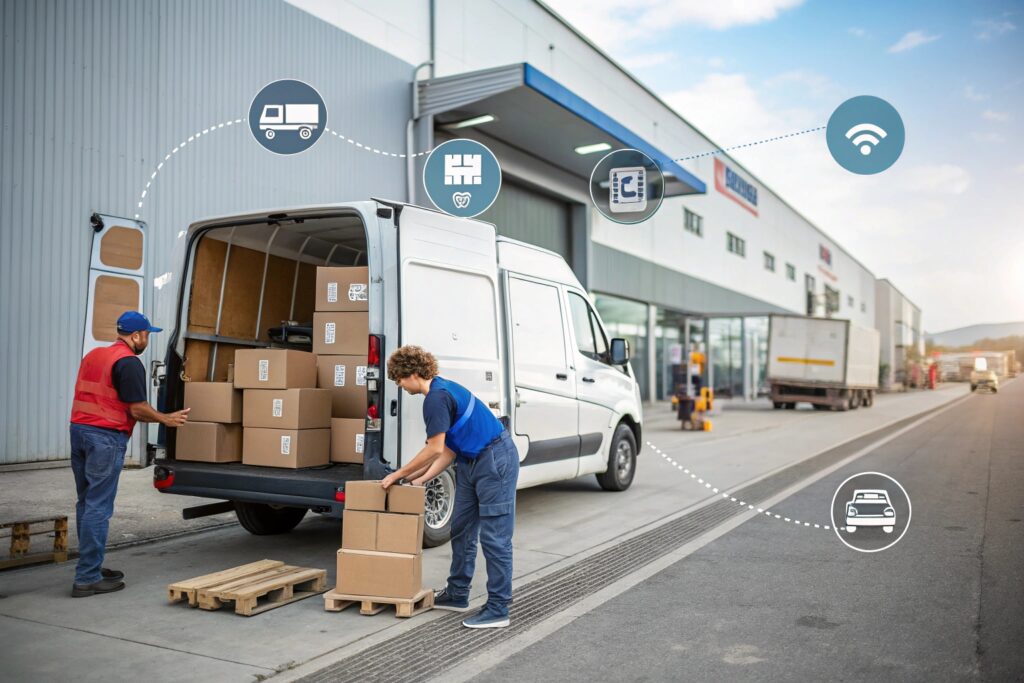
What typical cost savings can buyers expect?
Buyers can save $0.15–$0.30 per unit when embroidery is done in-house, depending on thread type, stitch count, and design complexity. For example, thread cost efficiency is higher when a factory uses the same spool across SKUs, avoiding wastage.
Can integrated embroidery lower MOQs?
Yes. External workshops often have 300–500 piece embroidery MOQs per color. In-house teams like ours allow trial runs as low as 50 units. That’s ideal for limited drops or capsule lines testing niche markets.
How Does Design Flexibility Increase with Internal Embroidery?
Some buyers assume factories will push back on non-standard embroidery. That’s only true when embroidery is outsourced. But when it's internal, we love experimenting with layout, thread styles, and mix-media combinations—fast.
Factories with integrated embroidery teams can prototype bold, layered, or seasonal motifs without waiting, increasing your speed to market and creative control.
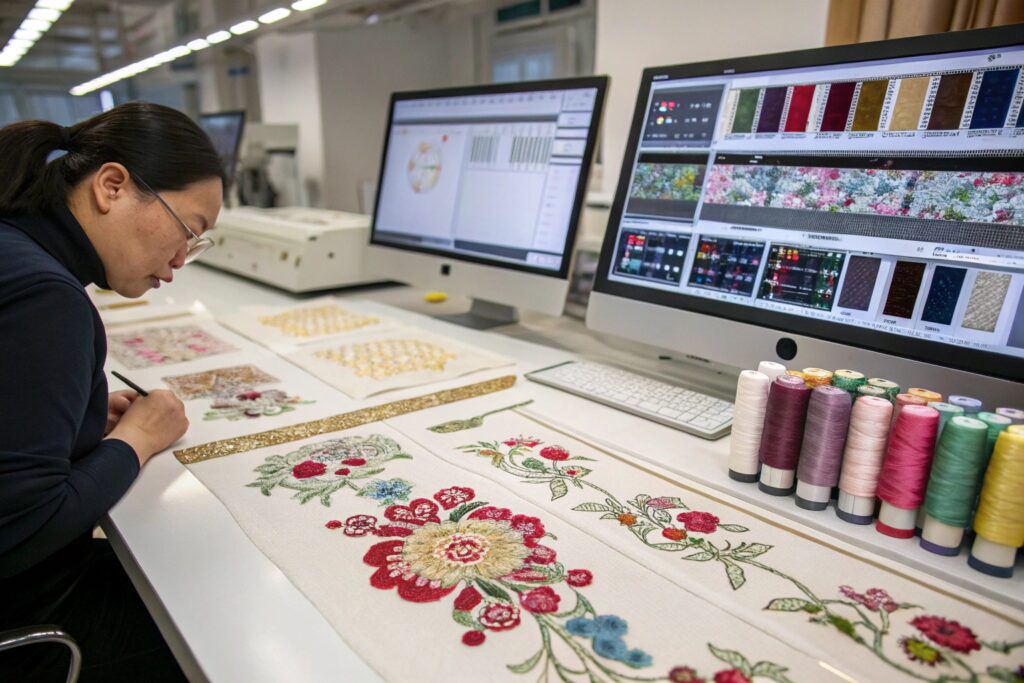
What embroidery formats allow more creativity?
Our team supports sequin, chenille, satin stitch, and even 3D puff embroidery for headbands. With multi-head Tajima machines, we swap between formats without machine resets. Custom thread-blend gradients are also available.
Can brands co-develop exclusive embroidery libraries?
Yes. We often digitize custom motifs, assign SKU codes, and store files in a private vault per brand. This supports brand identity and prevents replication across other clients’ orders. Clients can even request seasonal updates using the same templates.
Conclusion
Integrated embroidery isn’t just a production upgrade—it’s a brand growth advantage. Whether you're aiming for higher consistency, faster sampling, or flexible MOQ scaling, working with a headband supplier that controls embroidery in-house gives you the edge.
At HairAcc, our team brings embroidery, sewing, QC, and packaging together under one roof—empowering you to launch stylish, embellished headbands with speed and confidence.

